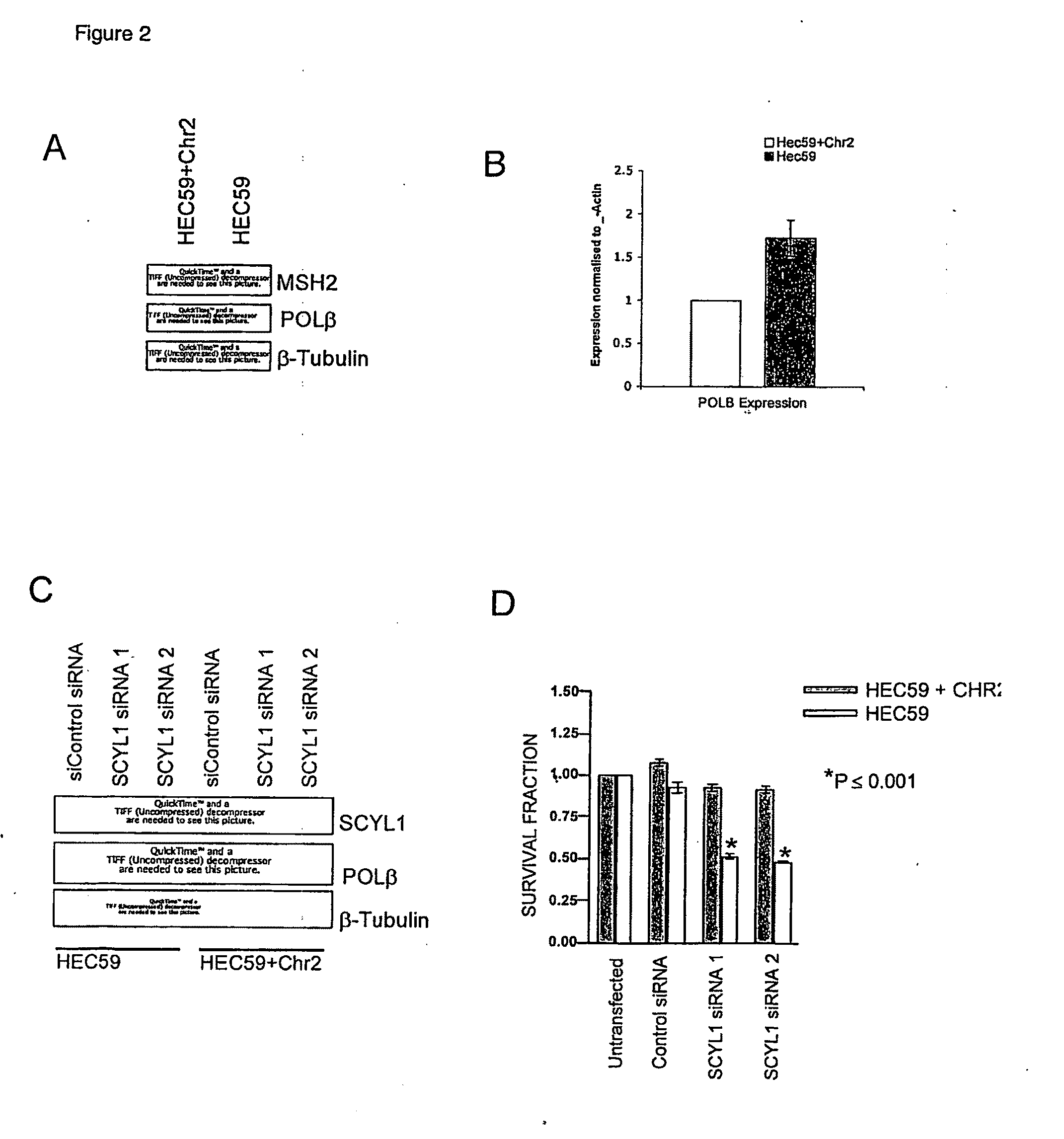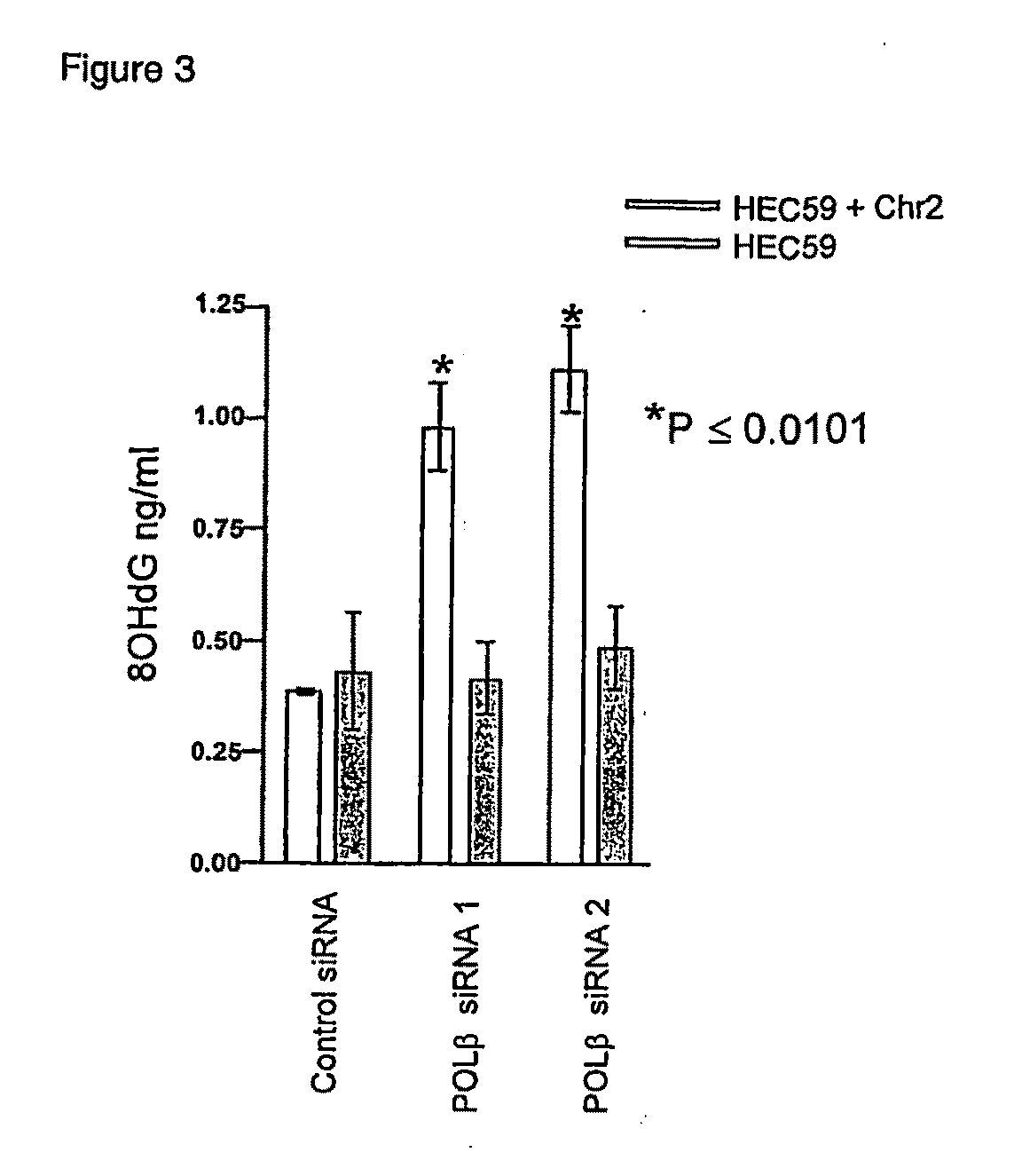Materials and methods for exploiting synthetic lethality in mismatch repair-deficient cancers
a cancer and synthetic lethality technology, applied in the field of materials and methods for exploiting synthetic lethality in dna mismatch repair (mmr) deficient cancers, can solve the problems of many key proteins remaining undrugged, unable to develop novel therapies, and difficult identification and validation time and cos
- Summary
- Abstract
- Description
- Claims
- Application Information
AI Technical Summary
Benefits of technology
Problems solved by technology
Method used
Image
Examples
experimental examples
[0238]It is often the case that the current approaches to cancer treatment group together similar clinical phenotypes regardless of the differing molecular pathologies that underlie them. A consequence of this molecular heterogeneity is that individuals frequently exhibit vast differences to drug treatments. As such, therapies that target the underlying molecular biology of individual cancers are increasingly becoming an attractive approach (Golub et al., 1999).
[0239]On avenue of investigation is to target the loss of tumour suppressor gene function that characterises many cancers. However, loss of tumour suppressor function, in comparison to oncogene activation, presents several problems in the design of potential therapeutic approaches that target these cancers. In the case of oncogene activation, gain of function or activity can potentially be pharmacologically inhibited. Conversely, it is often more technically difficult to efficiently recapitulate tumour suppressor function. Ho...
PUM
| Property | Measurement | Unit |
|---|---|---|
| Cell death | aaaaa | aaaaa |
Abstract
Description
Claims
Application Information
 Login to View More
Login to View More - R&D
- Intellectual Property
- Life Sciences
- Materials
- Tech Scout
- Unparalleled Data Quality
- Higher Quality Content
- 60% Fewer Hallucinations
Browse by: Latest US Patents, China's latest patents, Technical Efficacy Thesaurus, Application Domain, Technology Topic, Popular Technical Reports.
© 2025 PatSnap. All rights reserved.Legal|Privacy policy|Modern Slavery Act Transparency Statement|Sitemap|About US| Contact US: help@patsnap.com



